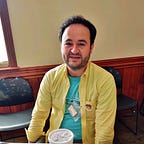On the brink of becoming an artistic phenomenon: The incendiary deejay who broke Elvis Presley north of the Mason-Dixon Line
On July 5, 1954, Elvis Presley, chock full of nerves and not exactly sure of what would transpire, ventured inside Sun Studio for his first official recording session with producer Sam Phillips, guitarist Scotty Moore and bassist Bill Black.
After trying various songs with middling results, Phillips was ready to end the session, but Presley serendipitously began playing Arthur “Big Boy” Crudup’s “That’s All Right” on his acoustic guitar, fusing the bluesy number into a heretofore unexplored musical genre that ultimately became rock ’n’ roll.
One of radio jockey Tommy Edwards’ singular achievements was recognizing Presley’s talent after “That’s All Right” was dropped in mid-summer 1954 on Sun Records. Edwards was the first deejay in Cleveland to actively promote Presley, and his efforts paid considerable dividends for the brash singer, breaking him north of the Mason-Dixon Line, virtually a racial divider during the ’50s. Since Presley vocally resembled a black R&B singer, multiple radio markets refused to play his music.
Edwards was so beloved by his Midwest audience that if he believed a single was worthwhile, it virtually guaranteed the artist would become a star. He also moonlighted…
